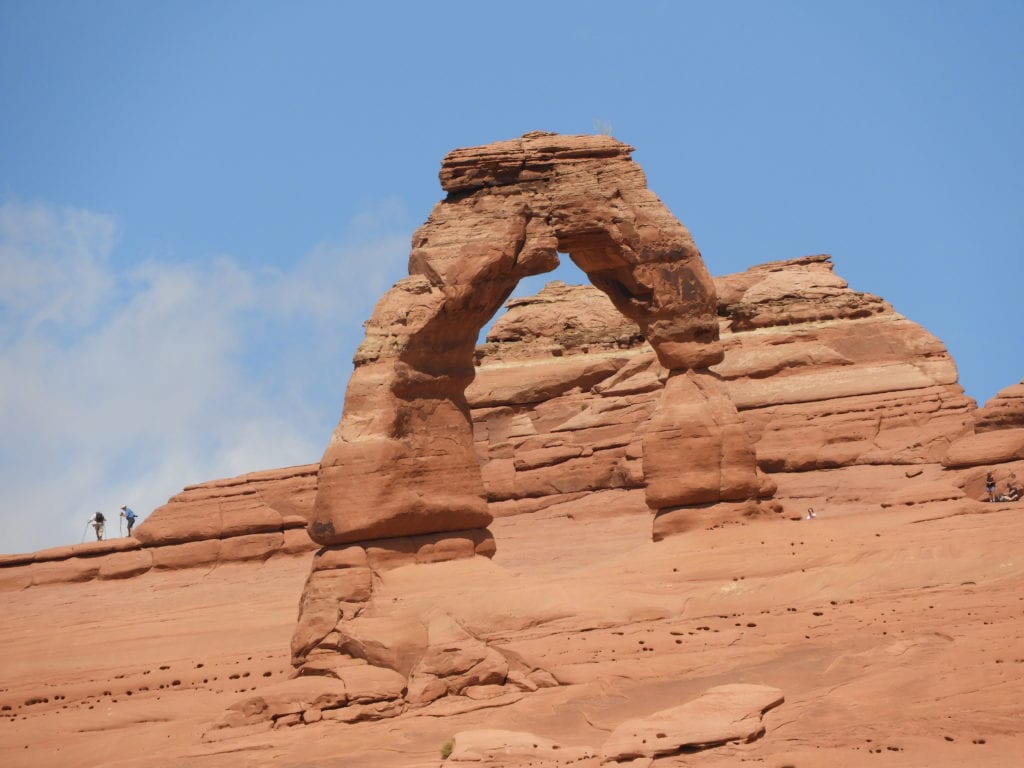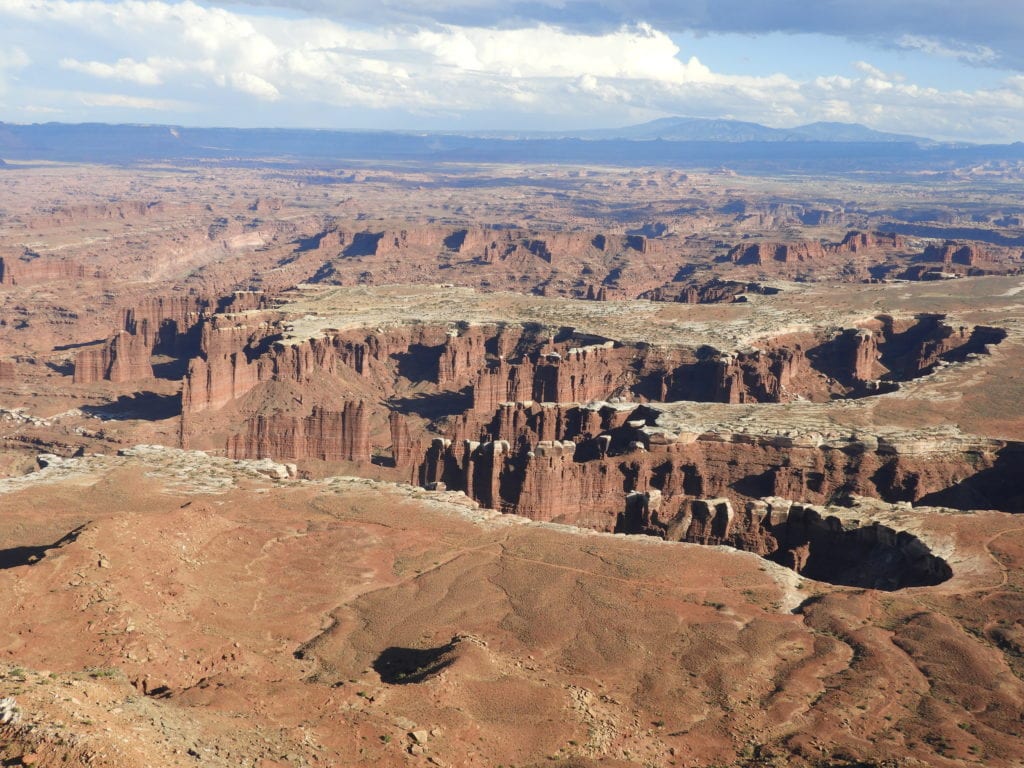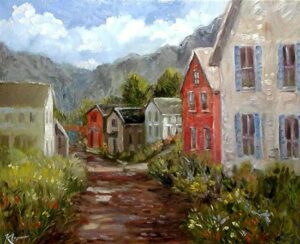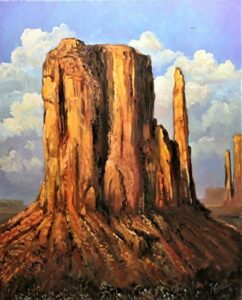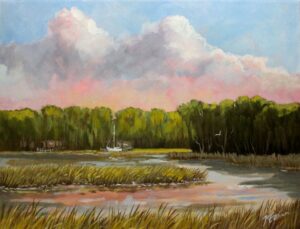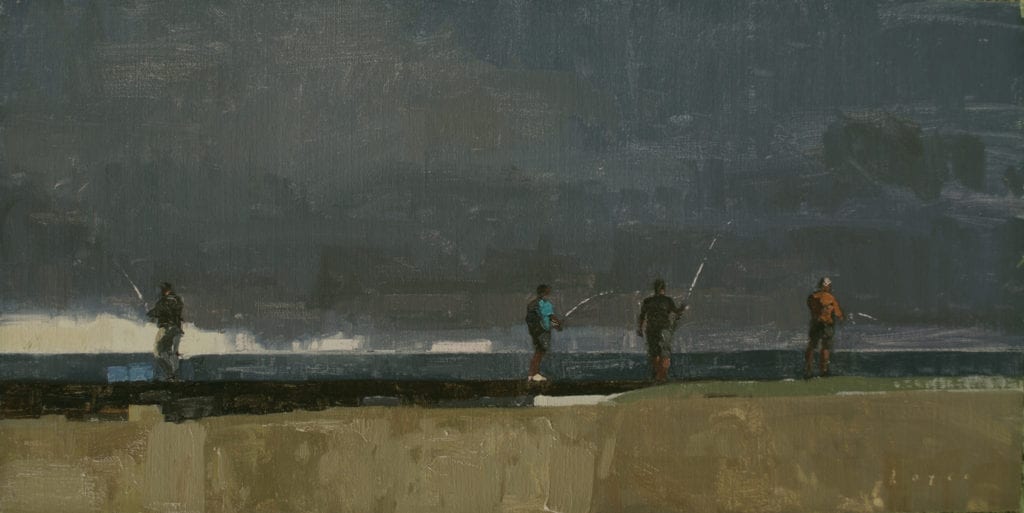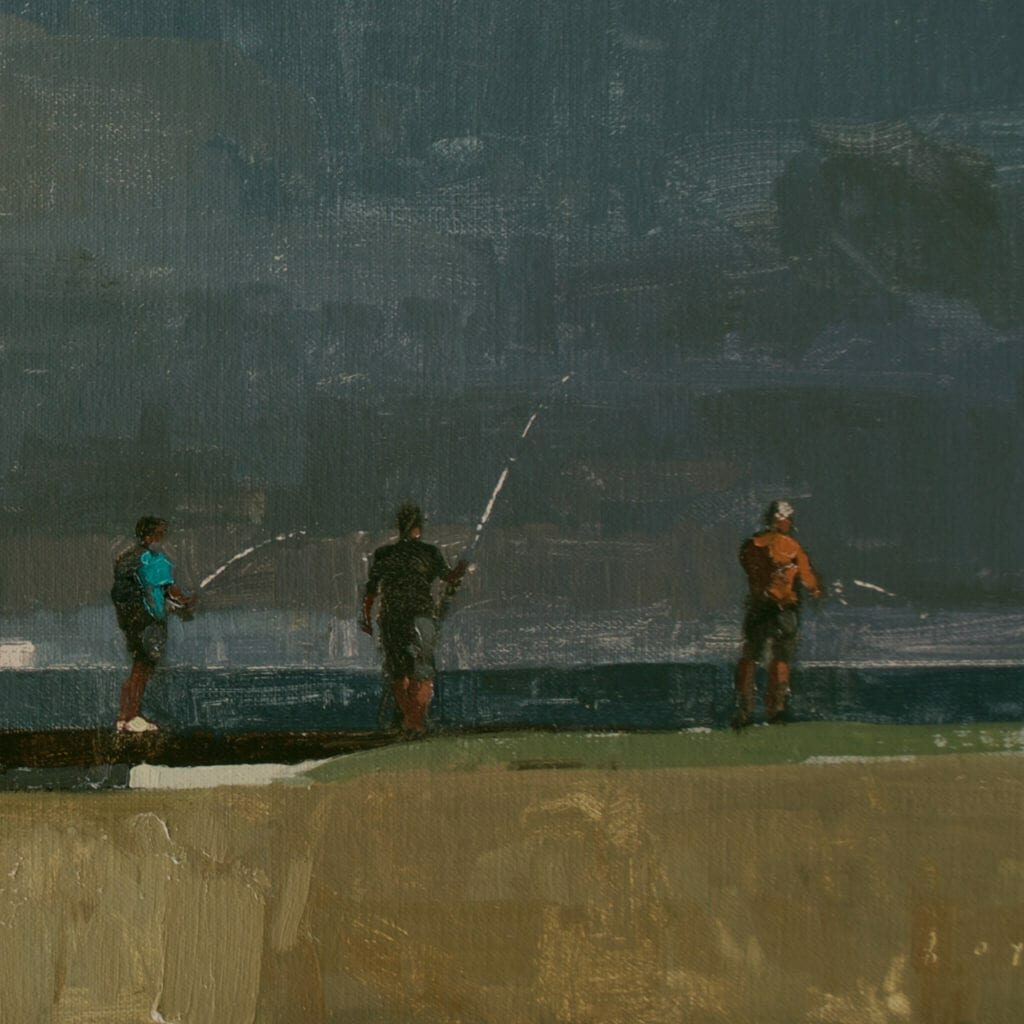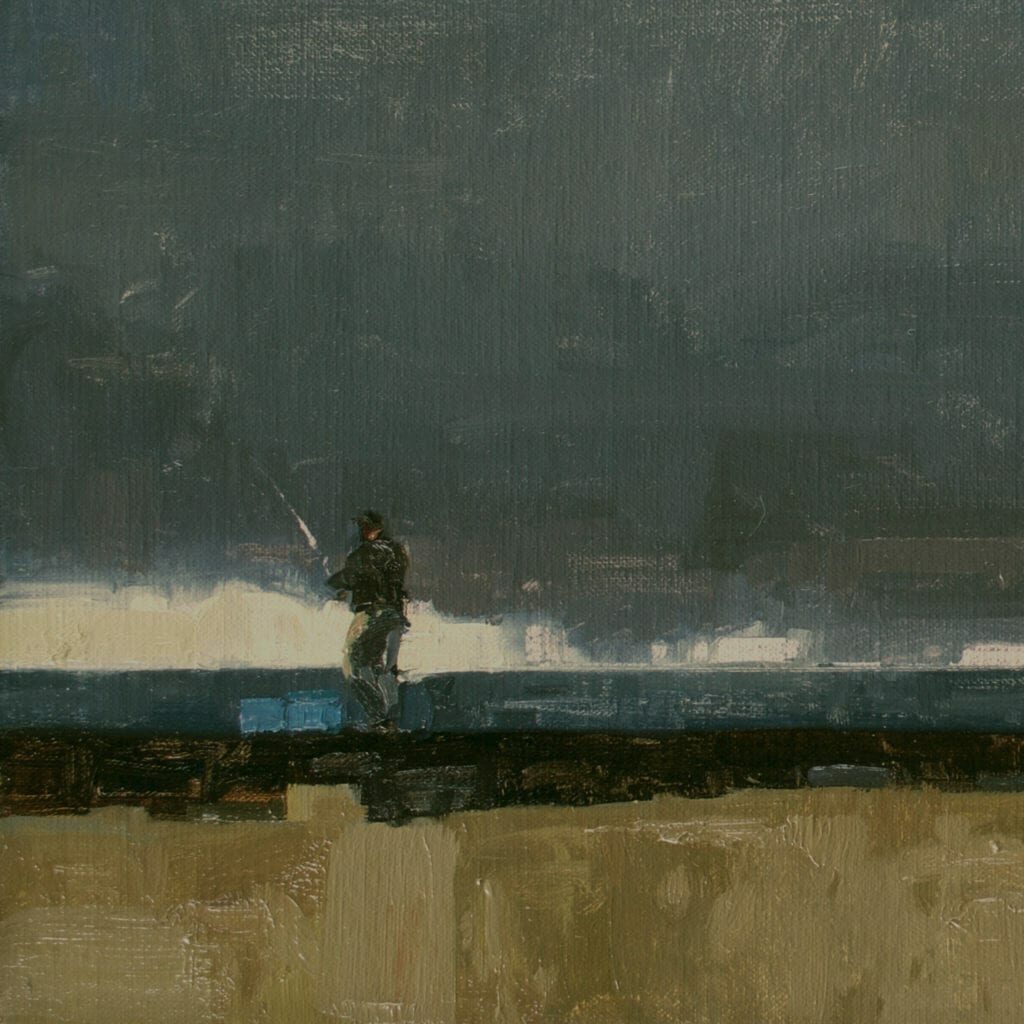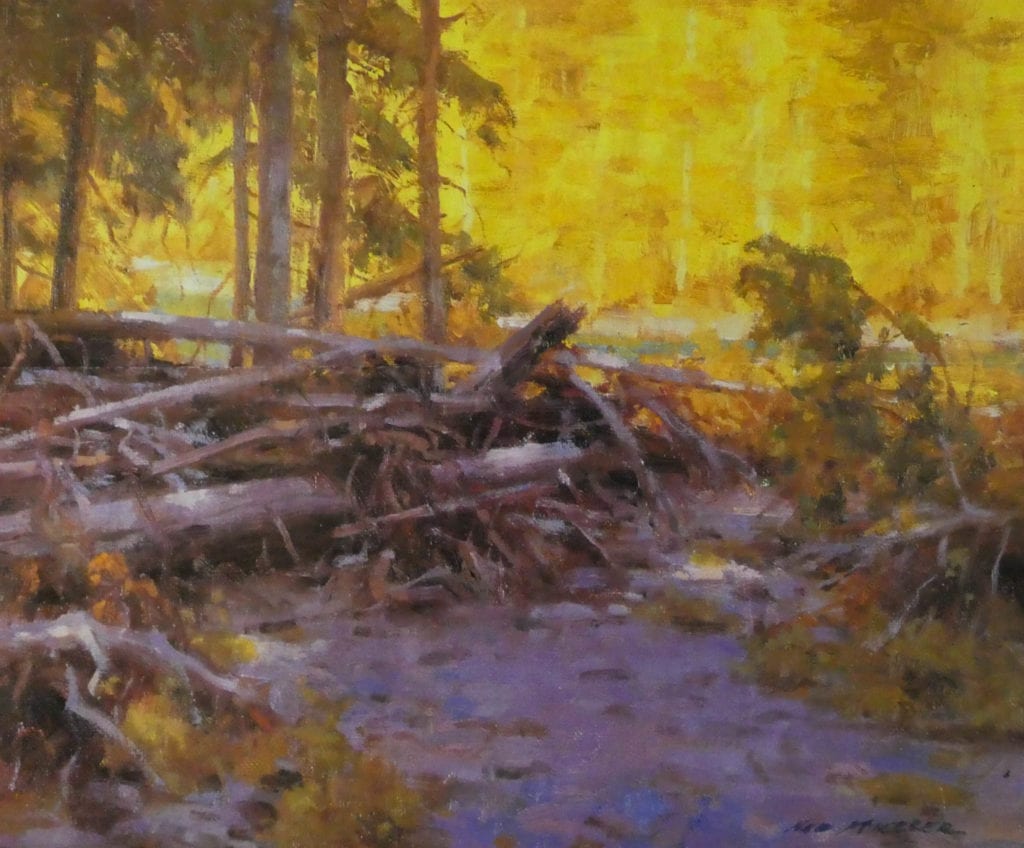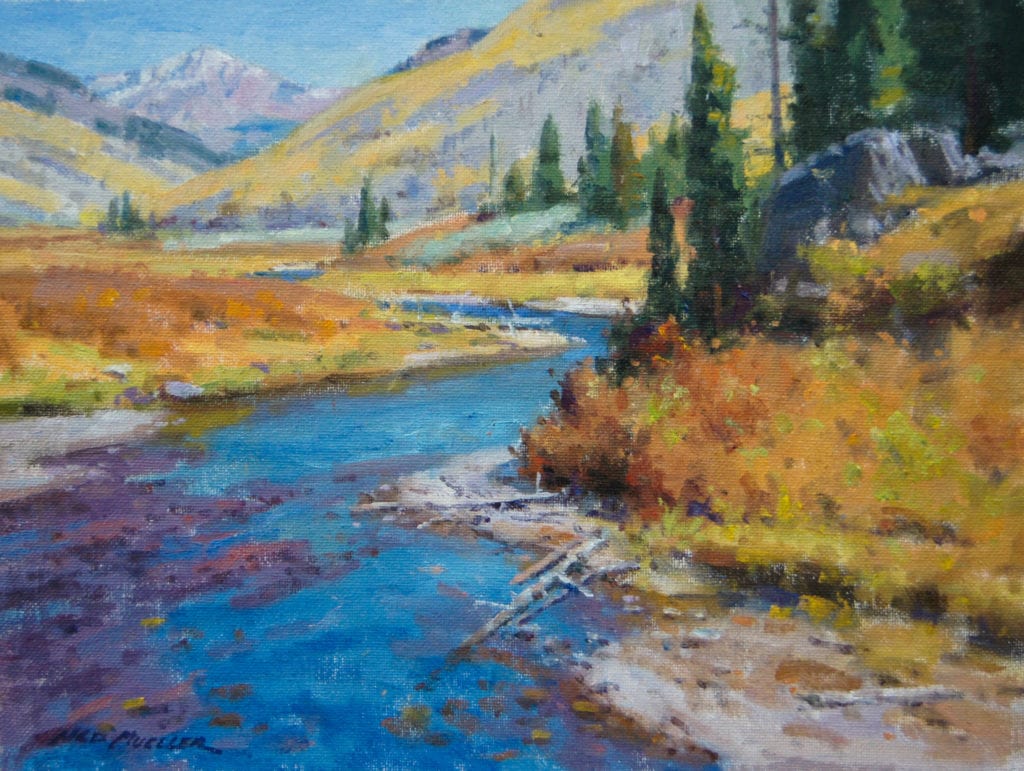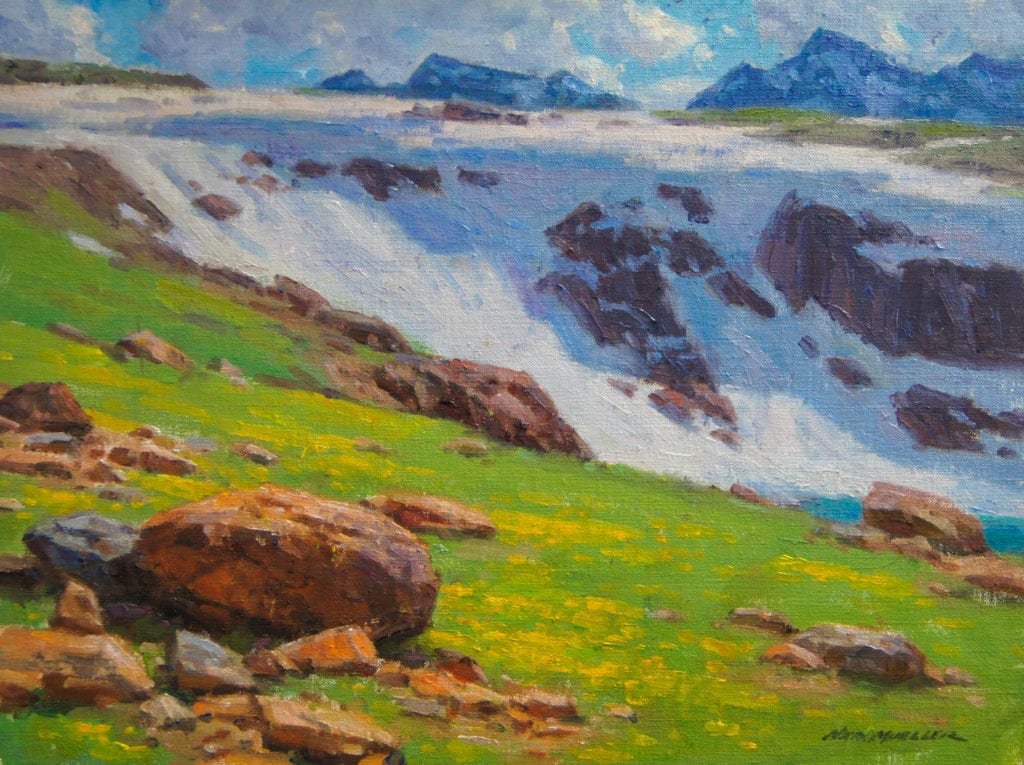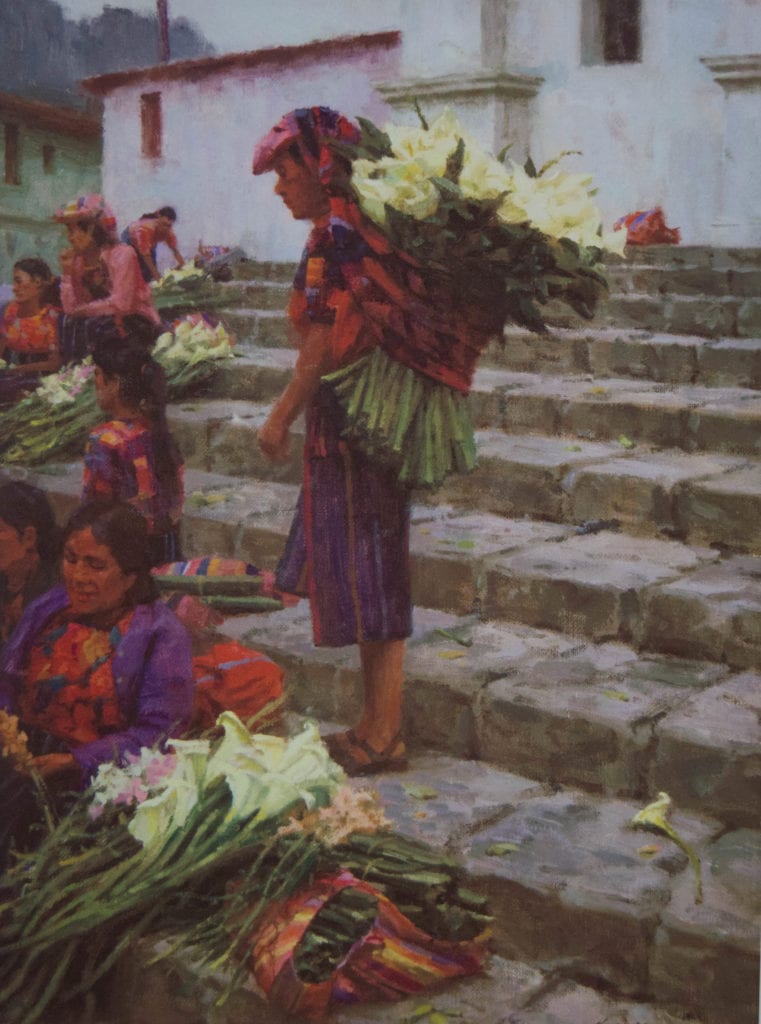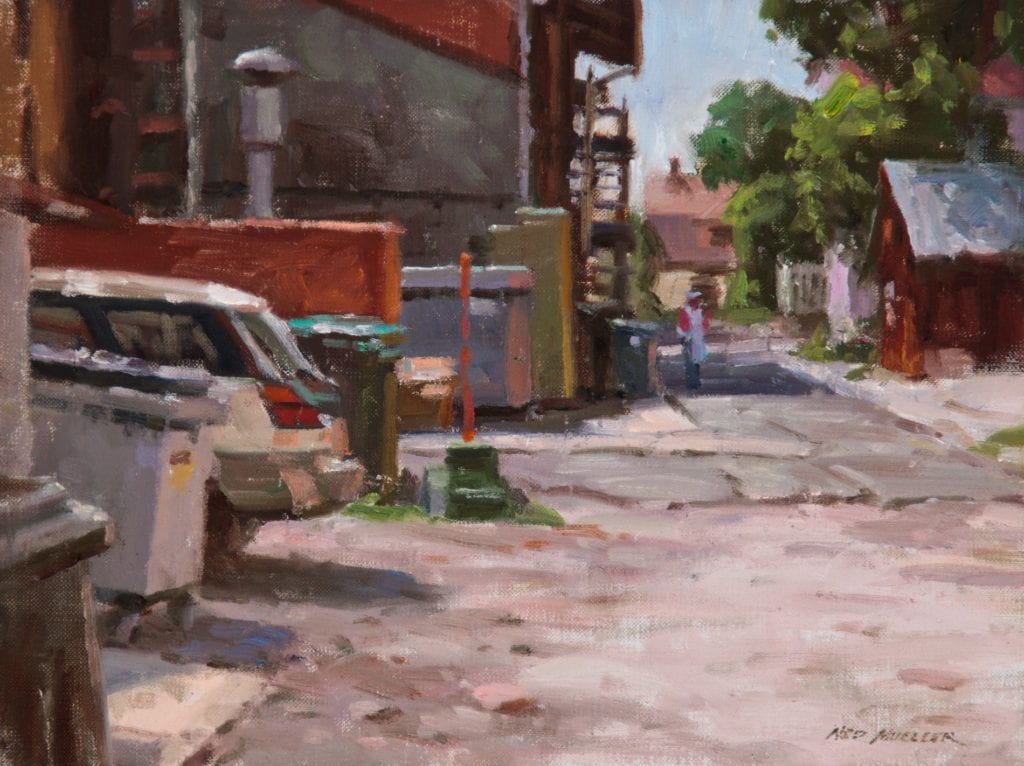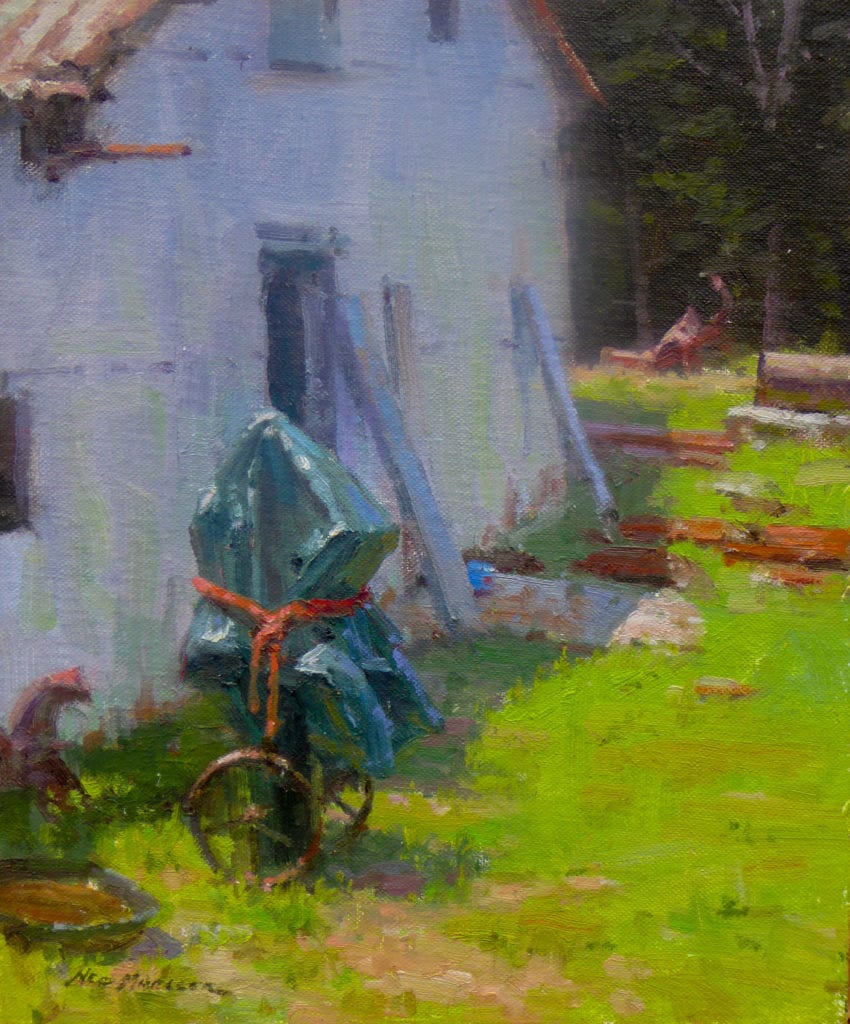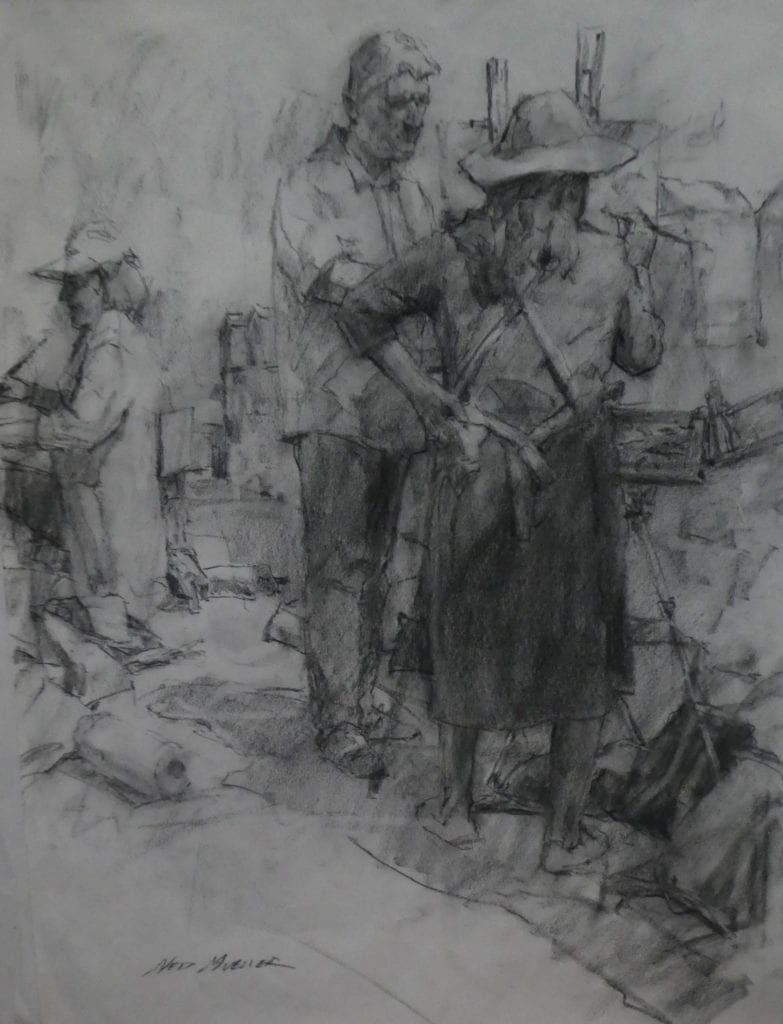Every winter I have to remind myself that artists don’t need to be on a perfect sunny sea shore to paint a beautiful landscape painting full of light and emotion. In fact, I would argue that some of the most beautiful landscape paintings are of snowscapes and of winter.
One of the most celebrated Russian landscape artists, Ivan Shishkin, often painted outdoors in winter. Shishkin, like any good artist, also had many interests including photography and arboriculture. When observing his work you can see how his interests directly influenced his painting. A lot of his work was created from life outside in the freezing tundra! He also created in the studio with photo references – can’t argue with Shishkin. So I’m writing this to share my own experience painting winterscapes and to share some insightful tips on going outdoors to take photographs and/or to paint!
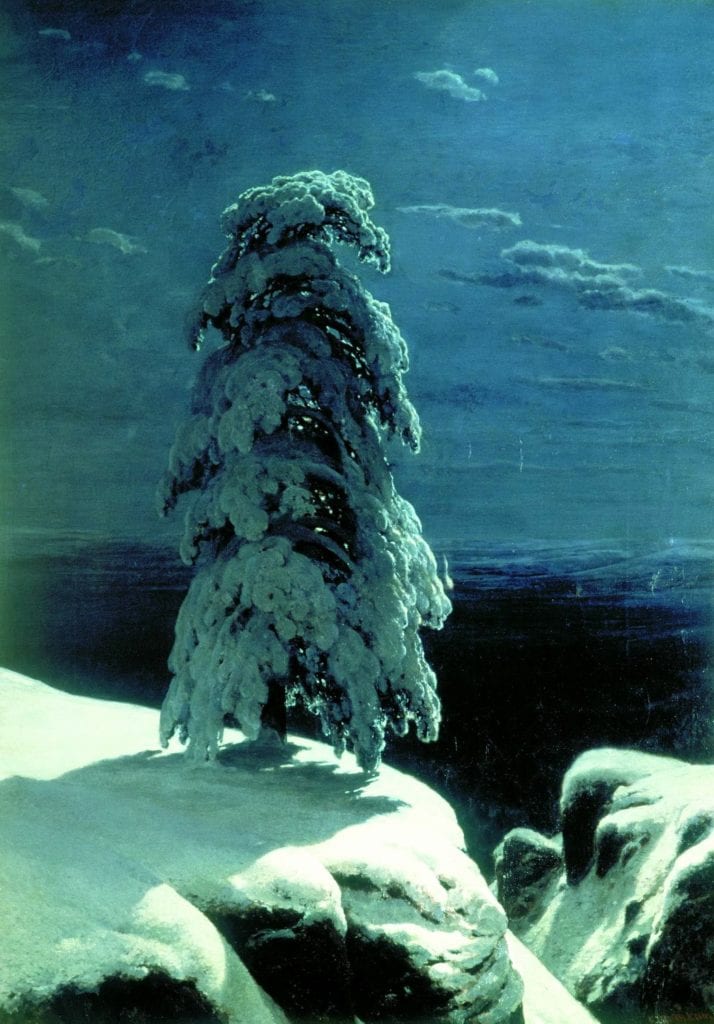
Be Safe:
- Be safe, don’t wonder out in weather in unfamiliar places by yourself
- Pack some food, cell phone, safety kit
- Go with a buddy when possible
- Tell someone when and where you are going
- Check the forecast
Must Haves:
- Waterproof ski jacket
- Waterproof/warm winter boots
- Dexterous Gloves
- Umbrella (if there is rain)
- Full Thermos
- Pochade paint box setup
- Notebook, Blank Canvas etc.
Have A Plan, But Be Flexible
Having a plan is great, it’ll get you out the door and in the right direction but I find that being open to spontaneity can lead to inspired work and fun ideas. This means that you should plan, have the right materials, have a goal etc., but once you get into the field you’ll need to be flexible and open to inspiration. No one knows when, how or where the muse will hit. Plus, if you are dead set on painting a sugar pine tree you may be out of luck unless you have already observed exactly where one is and how and when the light hits it. Don’t spend your time trying to force an idea looking for something that isn’t there. Take a few moments to look around, feel the place you are and record it.
Work Small
I personally love working on 6″x 8″ panels. This allows me to work very quickly, confidently covering the canvas with paint and to also make bold decisions. If I don’t like how it is going or if I want to try another idea with the changing light, I can just grab a new 6″x 8″. These small studies can then be used to create larger studio pieces alongside reference photos. Try to keep the freshness of the plein air piece by focusing mostly on the big obvious colors, the major shapes and key of light. This method should also be used when approaching a studio piece with a photo reference. Many hours of frustration can be avoided by simply creating a small color study before tackling any large composition whether from life or photo. If you are just taking photos and not painting on location bring a notebook and describe the colors and everything else you are seeing and feeling with words and scribbles. It may sound silly and you may not even refer to the notes again but you are exercising your brain and ability by stretching your observation skills and memory.

Keep It Short But Sweet
Getting outside is more than half the battle. It may take half of the day to get your kit together, to drive to a destination and find a composition to paint. So once you are set up, before you start, prepare yourself to work quickly and to capture what matters most: the mood, the major light effect, the tonal statement, major shapes and color notes. If you are a person who has a hard time working fast, allow yourself a couple sessions at the same time of day at the same vantage point. Or – challenge yourself to work faster and bolder by using only large brushes or making quick decisions. While in the field you’ll see that the light and atmosphere change very quickly from moment to moment so be mentally prepared to avoid frustration. Just capture what inspires you with paint, words, mental notes, sketches, and photography. Whatever tools you have.
Be Consistent
“Quality is not an act, it is a habit.” – Aristotle. It certainly doesn’t feel like there are enough hours in the day for art making. However, I have stayed consistent about putting time into my art and it is working. Even one consistent painting session a week will build upon itself. Just think, if you paint one painting a week that is fifty two paintings in a year! Try to think about the big picture by thinking in years. Your painting time is an investment and like any other investment it takes time and consistently to steadily grow and turn into something. Because we are living in a world with social media and netflix, it can seem like the world is moving faster than it actually is. Allow yourself time to be observant and to just soak in the meaningful bits we are supposed to understand and convey as artists. Nail down your process and the rest will fall into place.
Explore Color
Sometimes winter is dreary and not very colorful. This could be a good time to focus on tonal statements or it can be viewed as an opportunity to observe winter more intimately; search for bright orange sunrises, cold purple shadows, every color of blue, super soft edges and shapes that disappear into ice fog (is that a thing?). Artists should be open to what nature has to offer, observe it carefully and record the experience. There is no secret “painting color formula” however there are many ways to explore color and how it can be used compositionally. Here are some ideas:
Complementary colors: Colors that sit opposite of each other on the color wheel. This is a sure way to make an impactful statement. Painting with complementary colors doesn’t mean only using two colors, it means that the overall composition is keyed in those colors; each color you mix will have one of the complementary “mother colors”. The colors can be subtle shifts and even grays. Take a look at this painting “Magpie” by Claude Monet. Notice the subtle blue shadow and the light orange building? Aha!
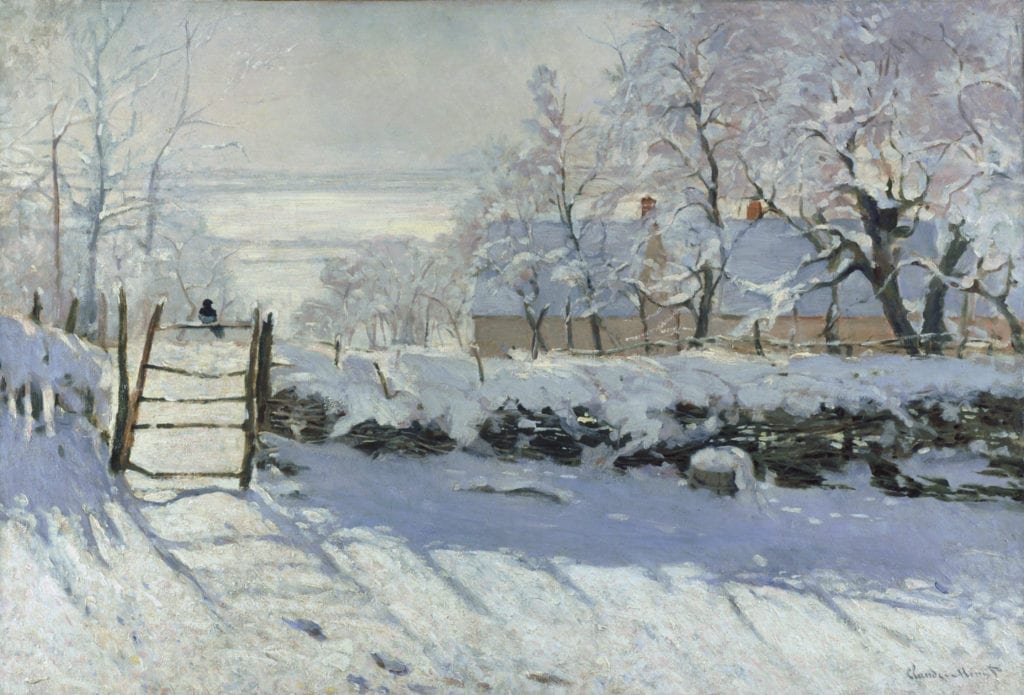
Monochromatic: A snowscape is a perfect opportunity to work in a monochromatic theme. Just look at this painting by Nikolai E. Timkov. The entire painting is blue, with a few warm accents. Not only does this make the painting appear unified but the cold colors give you a feeling of freezing temperatures. It tells you that the atmosphere is freezing and the air is cold to breathe in! I’m cold just by looking at it.
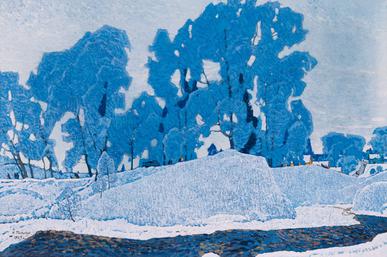
Saturation aka Chroma: Every great painting has clear focal points. A focal point can be created using saturation/chroma hierarchy. A viewer’s eye can be led by using high chorma in a focal point and low chroma in other areas. Imagine a few red birds sitting on a snowy branch. Perhaps one of the birds is a center of interest, that bird could draw more attention if his red was more saturated and chromatic than the other birds. He is important. I see this in winter landscapes usually the sky has some dramatic chromatic lighting situation, such as a colorful moon reflecting on a nearly black pond with gray snow.
Tonal: You’ll notice when going outdoors this winter, there may not be a lot of colors. If you find this to be the case, try paying attention to other aspects of the atmosphere. Where is the lightest light and darkest dark? Should you use a full value range or perhaps the values should be compressed. Is there a lot of atmosphere in the air? How dark is the value of those distant trees? How can you convey cold air? To me, winter is a wonderful time to really learn how to express air, mood and atmosphere with subtle shifts of value and edges. Play around.
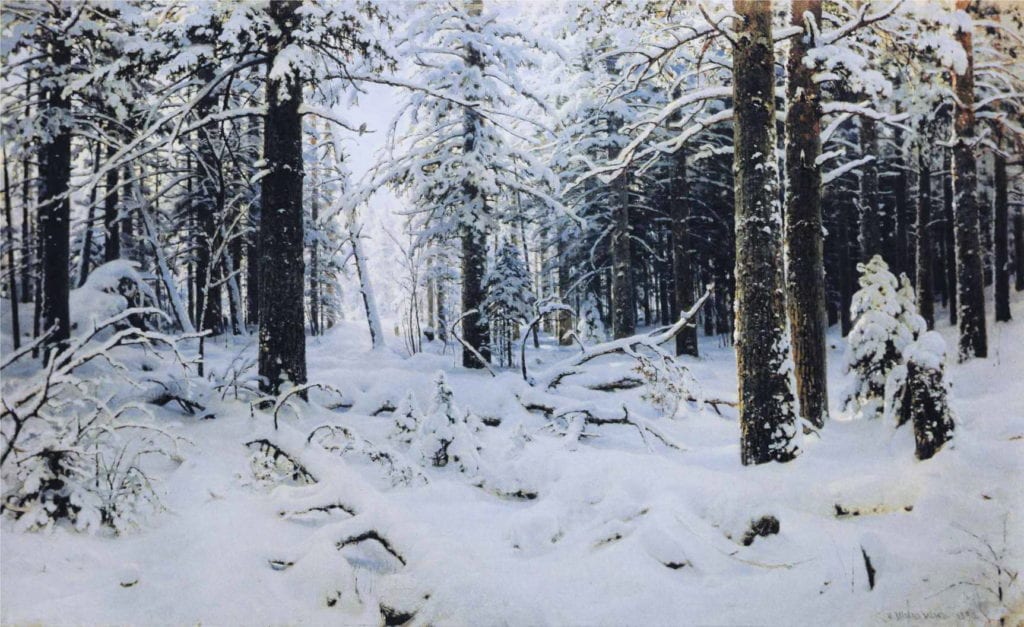
The last tip I have is to …
Look at Art
What is possible? What is inspiring about winter? While there is no need to straight copy someone else’s work, it is great to do some research to get a flow of ideas and some inspiration going. Overall, I don’t think painting extreme weather is for everyone though we can all appreciate the calm beauty of a wintertime landscape and for those who do paint outdoors during winter I would love to hear your own tips! I’ll definitely be trying my hand at it again this year. Happy painting!
